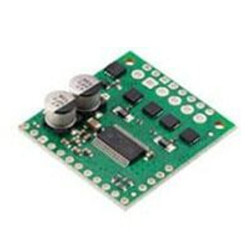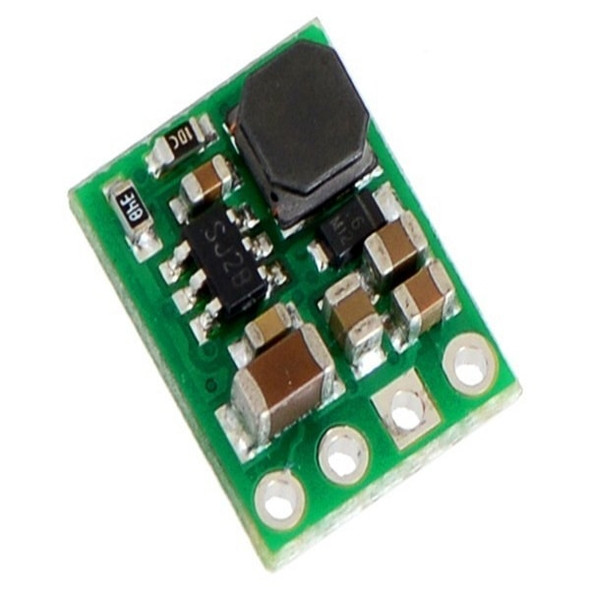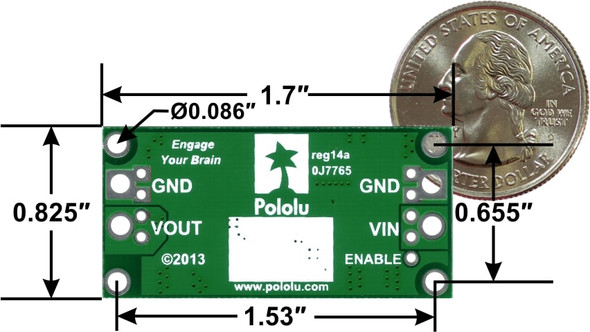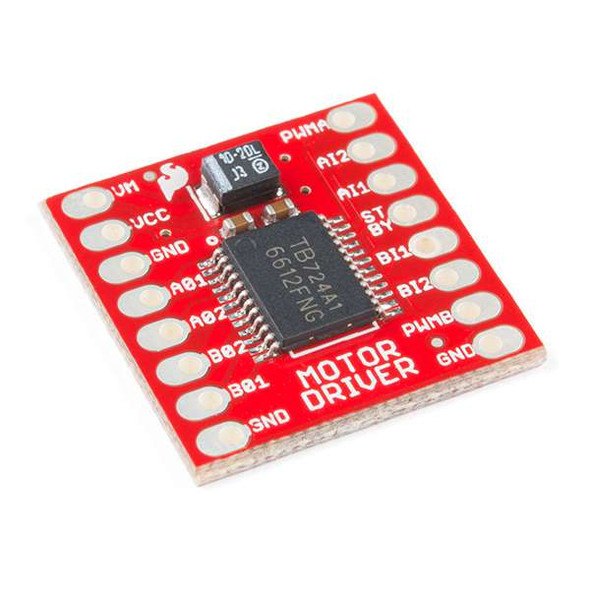
Breakout Boards
What is a breakout board?

The purpose of a breakout board is that it takes an electrical component, like a small sensor, and makes it easy to connect this to your Arduino, Raspberry Pi, or whatever platform you are using. Breakout boards are designed to simplify the process of prototyping with different components in your latest electronics project.
The component being connected is usually an integrated circuit (IC) – a small computer chip – which has a number of “pins” on them. These act as the connections between the chip and the rest of the system such as for power supply, ground or input and outputs. In the past ICs were large enough that you could drill a hole in the circuit board and use this to solder in a “through hole” pin which can easily be used with solderless breadboards. Over time the size of electrical components shrunk to the point were it is not practical to drill a hole in the circuit board – this has led to the rise of surface mount devices (SMDs). The ICs in these devices can no longer be used directly with solderless breadboards – breakout boards “break out” the conductors from the SMD onto a printed circuit board which can be easily be clipped into a breadboard again.
A comparable product is an Arduino shield which also allows simplifies the process of connecting new components to the main development platform. One advantage of breakout boards are that they tend to be smaller with the printed circuit board often being of a similar size to the IC. The main benefit is that breakout boards are not designed for use with any particular platform and are compatible with most micro-controller development boards – giving you more flexibility when you are experimenting with different setups.
- Product
- Qty in Cart
- Quantity
- Price
- Subtotal
-


Pololu Step-Down Voltage Regulators Fixed Output - D24V6Fx Range
£7.00Pololu Step-Down Voltage Regulators Fixed Output - D24V6Fx Range These Pololu Step-Down (buck) voltage regulators generate lower output voltages from input voltages as high as 42 V. They are switching regulators (also called switched-mode power supplies...£7.00 -


Pololu Step-Down Voltage Regulator Fixed Output - D24V5Fx Range
£4.96 - £6.00Pololu Step-Down Voltage Regulator Fixed Output - D24V5Fx Range The D24V5x family of 500 mA synchronous buck (step-down) voltage regulators generates lower output voltages from input voltages as high as 36 V. They are switching regulators (also called...£4.96 - £6.00 -


Pololu Step-Down Voltage Regulator Fixed Output - D36V6Fx Range
£17.00Pololu Step-Down Voltage Regulator Fixed Output - D36V6Fx Range The D36V6Fx family of 600 mA buck (step-down) voltage regulators generates lower output voltages from input voltages as high as 50 V. They are switching regulators (also called switched-mode...£17.00 -


Step-up Voltage Regulator Fixed Output – U3V12Fx Range
£3.95 - £7.80The U3V12Fx Range of step-up (boost) voltage regulators, enable you to generate output voltages higher than your input voltage, from as low as 2.5V. With a typical efficiency between 80% to 90%, the available output current is a function of the input...£3.95 - £7.80 -


Pololu Step-Down Voltage Regulator Fixed Output - D36V28Fx Range
£16.00 - £17.00Pololu Step-Down Voltage Regulator Fixed Output - D36V28Fx Range The D36V28Fx range of buck (step-down) voltage regulators generates lower output voltages from input voltages as high as 50 V. They are switching regulators (also called switched-mode power...£16.00 - £17.00 -


Pololu Step-Up/Step-Down Voltage Regulators Fixed Output - S18V20FX Range
£12.96 - £30.00Pololu Step-Up/Step-Down Voltage Regulators Fixed Output - S18V20FX Range This family of step-up/step-down regulators take an input voltage from 3 V to 30 V and increase or decrease it as necessary to produce the desired output voltage. They allow a...£12.96 - £30.00 -


Motor Driver - Dual TB6612FNG (1A) (ROB-14451)
£11.00 - £12.00Motor Driver - Dual TB6612FNG (1A) - SparkFun ROB-14451 The TB6612FNG Motor Driver can control up to two DC motors at a constant current of 1.2A (3.2A peak). Two input signals (IN1 and IN2) can be used to control the motor in one of four function modes:...£11.00 - £12.00 -


RJ11 Breakout Board (BOB-14021)
Sparkfun
£2.25RJ11 Breakout Board - SparkFun BOB-14021 This is the SparkFun RJ11 Breakout, two simple breakout boards for the common 6-pin RJ11 connector. These little boards can easily have one of our RJ11 6-Pin Connectors to work with common telephone cables. Each...£2.25 -


Current Sensor Breakout - ACS723 (SparkFun SEN-13679)
Sparkfun
£10.00Current Sensor Breakout - ACS723 (SparkFun SEN-13679) The SparkFun Current Sensor Breakout is a high accuracy board that utilizes the ACS723 for moderate AC and DC current sensing applications. The ACS723 sensor uses a Hall effect sensor to output...£10.00 -


Load Cell Amplifier - HX711 (SEN-13879)
Sparkfun
£11.00Load Cell Amplifier - HX711 Sparkfun SEN-13879 This Load Cell Amplifier is a small breakout board for the HX711 IC that allows you to easily read load cells to measure weight. By connecting the amplifier to your microcontroller you will be able to read...£11.00 -


DAC Decoder Module For Raspberry Pi GY-PCM5102 I2S Player
Proto-PIC
£6.00DAC Decoder Module For Raspberry Pi GY-PCM5102 I2S Player The DAC Module provides a super affordable high-quality DAC for the Raspberry Pi and is perfect for applications such as A/V receiver, Media Player, HDTV receiver and other applications requiring...£6.00Qty in Cart: 0Price:£6.00Subtotal: -


Qwiic 12 Bit ADC - 4 Channel (ADS1015) - SparkFun DEV-15334
Sparkfun
£13.00Qwiic 12 Bit ADC - 4 Channel (ADS1015) - SparkFun DEV-15334 A lot of the time you just need to add more analog inputs to solve a problem. It happens. The SparkFun Qwiic 12 Bit ADC can provide four channels of I2C controlled ADC input to your Qwiic...£13.00
